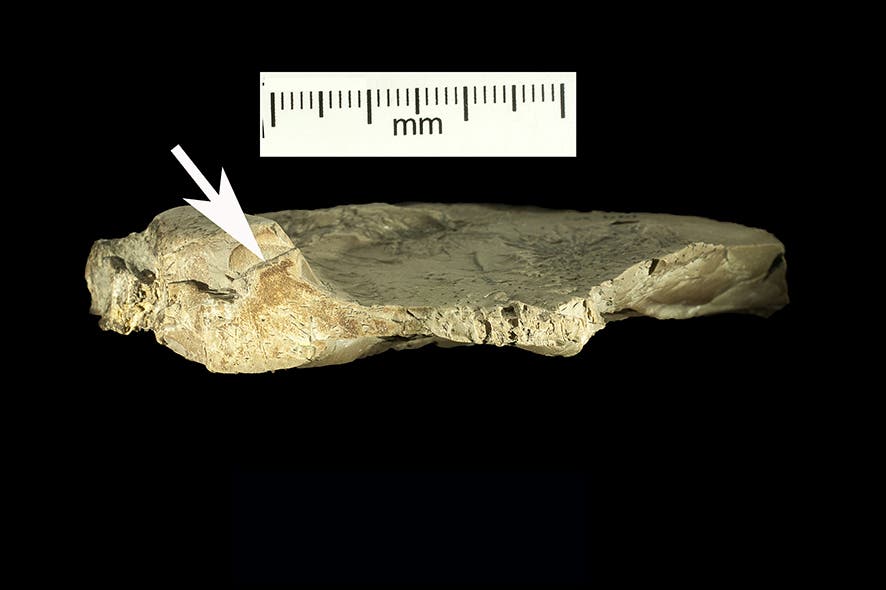A rock found at the Krapina site in Croatia 100 years ago seems to have been taken there by Neanderthals only because it was pretty, with no intention of being used as a tool.

Image credits David Frayer / University of Kansas.
A huge part of science is collecting stuff — data, questioners, images, stuff from caves. Sadly, what often happens is that things get collected, taken to a place such as a lab or museum to be examined, and then simply forgotten.
Sometimes though, research teams go museum-diving, and they make some pretty fantastic finds. An international team of researchers has (re?)discovered a piece of split limestone retrieved from the Krapina site in Croatia and stored in the Croatian Natural History Museum in Zagreb. The site was excavated between 1899-1905 and found to contain Neanderthal bones.
The best part? This piece of limestone wasn’t worked over and would have probably made a horrible tool anyway. Neanderthals couldn’t eat it, or use it in any other way. It simply was a pretty rock.
“If we were walking and picked up this rock, we would have taken it home,” said David Frayer, a professor emeritus of anthropology and corresponding author of the study.
“It is an interesting rock.”
The finding adds to a growing body of evidence showing that Neanderthals weren’t simple brutes. They were able to see simbolic or aesthetic value in objects, not just the “rock big, good for smash” property. Frayer and lead author Davorka Radovčić, curator at the museum, also published a paper in PLOS ONE in 2015 describing a set of eagle talons found at the same site which were fashioned into jewelry.
“People have often defined Neanderthals as being devoid of any kind of aesthetic feelings, and yet we know that at this site they collected eagle talons and they collected this rock. At other sites, researchers have found they collected shells and used pigments on shells,” Frayer said.
“There’s a little bit of evidence out there to suggest that they weren’t the big, dumb creatures that everybody thinks they were.”
Similar to how they found the talons, Frayer credited Radovčić’s keen eye for finding the rock among the items recovered from the site. The cave, he said, was dug in sandstone so the rock obviously was brought from somewhere else. It stands out in over 1,000 stone items recovered from the cave, but the original archaeologists didn’t give it much attention beyond bagging and tagging it.

Image credits David Frayer / University of Kansas.
The rock, which measures roughly 5x4x1,5 inches, doesn’t show any striking platforms or other preparation of an edge, so the team suspects it wasn’t meant to be used as a tool. A small flake seems to fit in with the rest of the rock, but the break likely happened after the specimen was recovered
“The fact that it wasn’t modified, to us, it meant that it was brought there for a purpose other than being used as a tool,” Frayer said.
What caught Radovčić’s eye were the inclusions (black lines) that stood out from the brown rock. Its look is probably what made the Neanderthal want to collect it. He or she either carried it a few kilometers to the cave from a local outcrop of biopelmicritic limestone, or found it closer to Krapina — likely transported by a stream.
And yea I get that as far as archaeological findings go, this one is not so dramatic — it’s a stone from the stone age. But personally, I think it’s awesome. I like collecting rocks. Always have. The fact that one Neanderthal a hundred-and-some thousand years ago had the same hobby as me makes them more relatable than a gazillion cave paintings in France ever could.
Pretty rocks rule, my Neanderthal brother. Or sister.
The full paper was published in the journal Human Palaeontology and Prehistory with what is probably the best scientific paper name I have seen in a long time: “An interesting rock from Krapina”.


